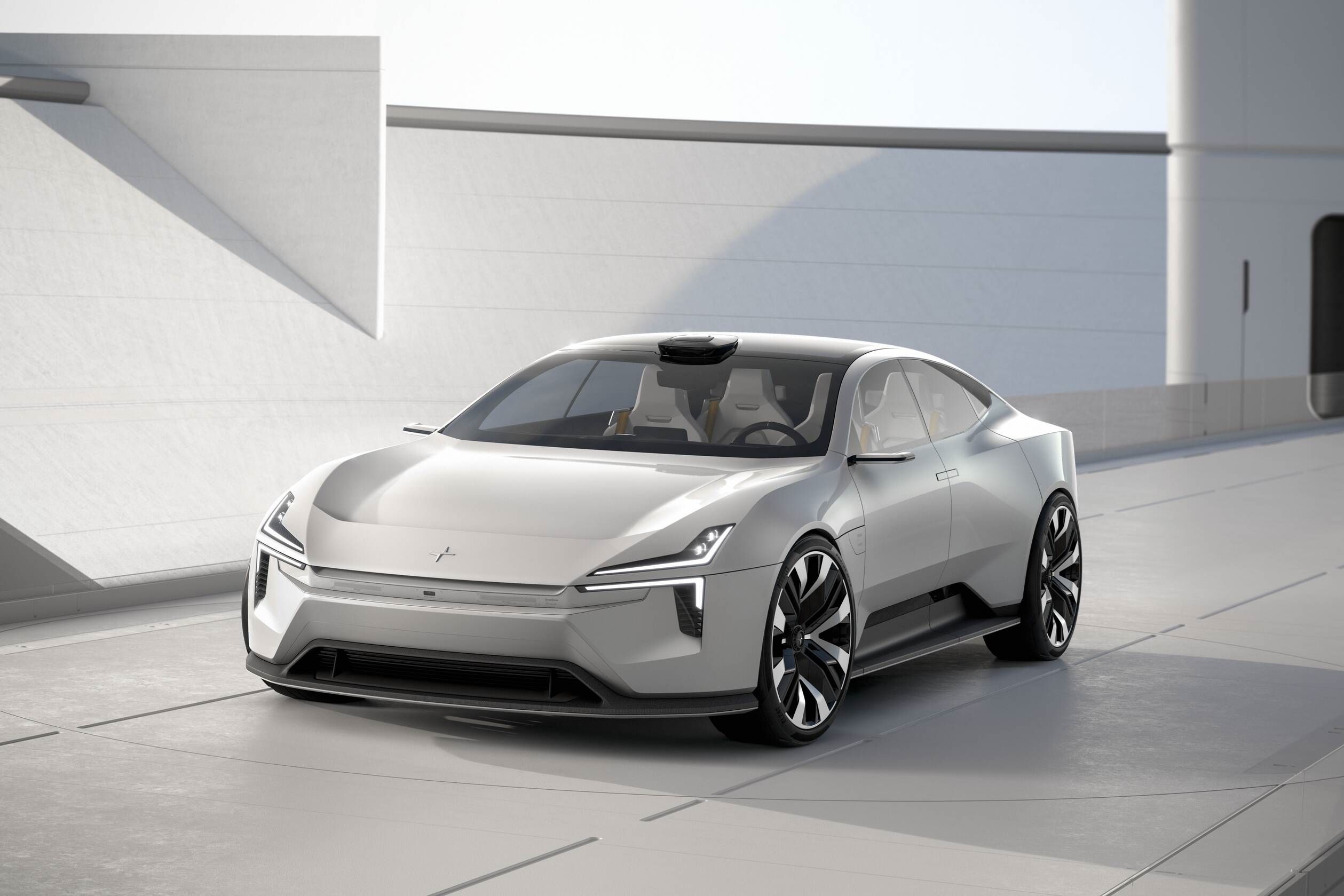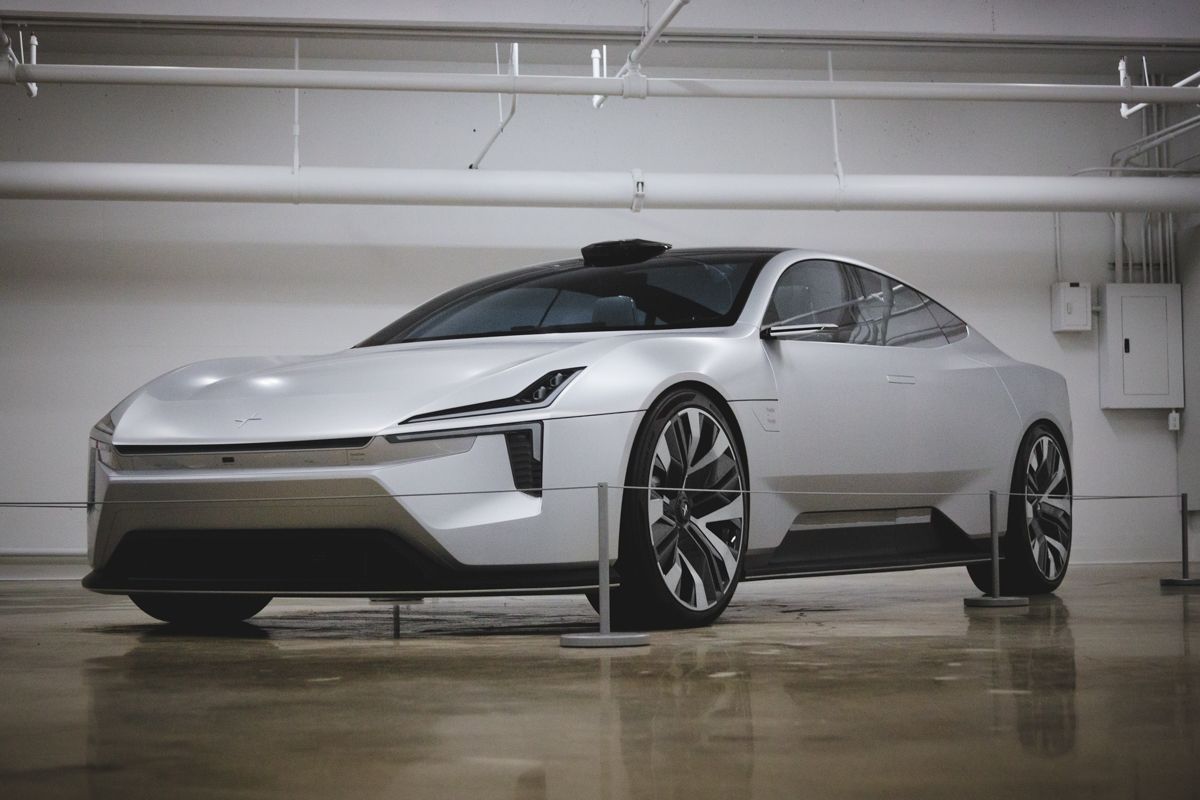
Polestar is doing a fantastic job getting itself out of the niche position as Volvo's tuning arm and into the mass-market realm of automaker catching the EV wave. So far, we've had the Polestar 1, a limited-production plug-in hybrid performance car, and the Polestar 2 - a full-electric sedan boasting utility mixed in with serious luxury and performance chops. Given how Polestar and Volvo are intertwined, the performance level is mixed in heavily with luxury to create a premium brand that is more in line with Porsche than Tesla. The next steps include an "aerodynamic performance electric SUV" called the Polestar 3, and we presume there will be a Polestar 4 as well - likely an even larger SUV. But 5 is the magic number because we're told the Polestar Precept Concept will become the Polestar 5 in 2024. But before the 5 arrives, the Precept lays down the rules of design Polestar will use as a blueprint moving forward. It's not just a concept; it's a manifesto.
It's an interesting call for Polestar in a world of crossovers to be looking ahead two years to make an electric four-seater luxury performance sedan. It shows how Polestar is planning to elevate itself beyond Tesla comparisons. So, when we got a chance to slip over to the vault area in the Los Angeles-based Peterson Museum where the Precept show vehicle is being displayed, we jumped at the chance and grabbed a camera on the way to chat with Polestar and take a close look at what the automaker is baking.
Overall Proportions: All About Length
The most apparent feature of the Polestar Precept is its limousine-length 122.5-inch wheelbase (space between the front and rear wheels). According to Polestar, the final production version won't differ much, if at all. With its massive length and width allowing for extensive leg and elbow room in the pair of rear seats, nobody is going to be buying the Polestar 5 unless they are going to be ferrying people around that are used to traveling first class. If we were making bets, we would say that the Polestar 2 and 3 will be the volume models while the 4 and 5 will be the full-fat luxury models. Hopefully, the Polestar 6 will be a full-on supercar, but we digress.
Chassis: All About The Bonding
Torsional rigidity is going to make or break the Polestar 5 if the wheelbase is to remain as long as we're seeing. The key here is that the Polestar 5 will be riding on a whole new platform built from the ground up by Polestar. Unlike the Polestar 2 sedan's stamped steel chassis, the Polestar 5's chassis is being created using bonded aluminum. That means using an epoxy resin rather than welding to create the structure. Polestar says there will be no welding in the chassis, which is going to be no mean feat. The car's body panels, which will be aluminum too, will be part of the structure, and, we presume, so will the battery arrangement. One of the few absolute answers Polestar has given is a torsional rigidity of 47kNm/deg. That's remarkably stiff given the wheelbase on show. For some perspective, a Lamborghini Aventador's torsional rigidity is 35kNm/deg, and a Rolls-Royce Phantom is 45kNm/deg. Perhaps the most telling thing about the structural rigidity is that the Precept Concept doesn't have B or C pillars.
Technology: Law Dependent
A close look at the Precept Concept and a couple of things grabbed our attention. First was the cameras on the side to replace the rearview mirrors. They're necessary because the massive panoramic roof stops before it becomes a rear window, and there's no rear window for a traditional mirror to see through. As far as we know, this is not yet legal in the US despite it being a better solution than a rearview mirror - a camera can be mounted to give the best view possible and give a much wider field of view. If our laws don't change by 2024, Polestar will have to figure that out.
The other attention-grabber is a Lidar imaging array at the front of the roof and over the windscreen. We've seen them before on prototypes and testbed autonomous driving cars because that's where the sensors get the best field of view. There are also long- and mid-range radar units, ultrasonic sensors, and a high-definition wide-angle camera in the area that would be a grille on a traditional internal combustion-driven vehicle. How far into autonomy the Polestar 5 will be when it launches is anyone's guess, though. After all, another two years of development in autonomous driving technology is a long time.
Aerodynamics: Hood Wing Is Just The Start
To get every bit of range and performance out of an electric vehicle, more and more importance is being put on aerodynamics. Polestar starts at the front with a wing integrated into the hood to direct airflow over the car and reduce turbulence. Air ducts behind the front wheels "contribute to a more laminar flow around the side of the car," and air ducts behind the rear wheels do the same as well as help with brake cooling. Through the 22-inch wheels that feature aerodynamic inserts, we can see Akebono brakes, likely shared with the Polestar 1's performance units. The Pirelli tires are specially made for the concept, but we couldn't get any definitive answers as to what will be on the production model.
Materials: Bucking Tradition
We've already covered the aluminum chassis and body, but Polestar is taking its use of reclaimed or sustainable materials up a notch. Inside we'll find the same reclaimed material-based seat covers, carpeting, and wood, and the Polestar 5 will reject traditional design and accent materials like chrome, leather, and even carbon fiber. On the outside, the front splitter, side sills, and rear valence look like they are made from carbon fiber, but the material is a lightweight natural composite based around flax (also known as linseed in some countries). A Swiss firm called Bcomp has been pioneering the material as an alternative to carbon fiber, which has its own issues such as being expensive to make and sharp when shattering in crashes. The Bcomp material has many benefits, including being cheaper to create, extremely lightweight, and incredibly efficient at vibration damping. The material does also appear inside the concept car.
Lighting: The Symbolism Of Splitting Thor's Hammer
Before we look at the headlights, let it be known that the single blade of light across the back of the Precept looks sensational in person, and the whole back end is a logical aesthetic upgrade over the Polestar 1 and 2. It deserves as much attention as the front of the vehicle, but that's what most people will focus on. What's most telling to us is how Volvo's "Thor's Hammer" design signature has been split in half here, letting the world know Polestar is still linked to Volvo, but also its own thing. The platform is Polestar's, and it looks like the interior will move away from feeling like a Volvo. Not that Volvo interiors are bad, far from it, but Polestar is absolutely building its own identity here.
Conclusion: High Hopes
As we mentioned, Polestar is giving little confirmation away on most aspects of the Precept as a production Polestar 5. The reason we won't be talking about the drivetrain is because Polestar will only say right now that "it is fully electric and powered by batteries." Given how fast technology is moving, giving performance or range targets at this point is likely pointless. We can make some educated guesses, though. No doubt the company knows the Polestar 2's 270 miles of range might be fine practically, but it's not competitive with other similar models. With the Tesla Model S and the Lucid Air claiming 400 miles of range, Polestar will surely be shooting for an available drivetrain configuration to match or exceed that by 2024, as well as a more performance-orientated option and something in-between. As a statement of intent in luxury and styling, opinions will vary, but we think it looks stunning and hope like hell that Polestar holds to its word and not much changes when it goes into production in 2024.

